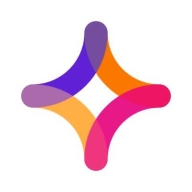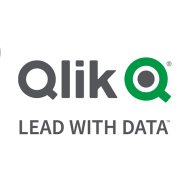

Jitterbit Harmony and Qlik Compose compete in the data integration category. Jitterbit Harmony has the advantage in pricing and support, while Qlik Compose is preferred for its robust features.
Features: Jitterbit Harmony offers an intuitive design and ease of integration with various systems, providing API management, integration flexibility, and user-friendly UI. Qlik Compose excels in data warehousing capabilities and ETL automation tools designed for complex environments, emphasizing data transformation and loading efficiency.
Room for Improvement: Jitterbit Harmony could enhance advanced data transformation functionalities, expand its data warehousing features, and improve cloud-based automation capabilities. Qlik Compose might improve pricing flexibility, streamline its UI for broader accessibility, and enhance customer onboarding processes.
Ease of Deployment and Customer Service: Jitterbit Harmony features a simple deployment model that is quick to implement, supported by responsive customer service. Qlik Compose offers a specialized deployment tailored to sophisticated data management needs, with longer setup times but excellent customer service handling complex queries.
Pricing and ROI: Jitterbit Harmony typically involves lower setup costs and offers a quicker ROI for rapid integration solutions. Qlik Compose requires a higher initial investment but delivers significant long-term benefits for comprehensive data management challenges, focusing on long-term value creation through advanced features.
| Product | Market Share (%) |
|---|---|
| Qlik Compose | 1.0% |
| Jitterbit Harmony | 0.6% |
| Other | 98.4% |


| Company Size | Count |
|---|---|
| Small Business | 8 |
| Midsize Enterprise | 3 |
| Large Enterprise | 1 |
| Company Size | Count |
|---|---|
| Small Business | 3 |
| Midsize Enterprise | 3 |
| Large Enterprise | 6 |
Jitterbit Harmony offers an advanced integration platform that simplifies data transformation, helps users quickly connect apps, and automates workflows, streamlining complex business processes efficiently.
Designed to meet the high demands of modern businesses, Jitterbit Harmony enables seamless integration across cloud and on-premise environments. By leveraging its powerful tools and user-friendly design, users can accelerate innovation, reduce operational costs, and enhance productivity. It bridges the gap between traditional and emerging technologies, ensuring organizations can adapt quickly to market changes and remain competitive.
What are the key features of Jitterbit Harmony?Jitterbit Harmony finds its application across numerous industries, from enhancing data integration in the healthcare sector to optimizing supply chain logistics in manufacturing. It supports financial institutions by improving transaction processing and facilitates real-time data connectivity in retail environments, making it a versatile choice for diverse industries looking to innovate rapidly.
Qlik Sense is a powerful business intelligence tool that offers a range of features to help organizations make faster and more informed decisions. Its primary use cases include operational and financial dashboards, self-service reporting, and centralized access to cross-functional reports. The solution is praised for its mobile platform, ease of use, data-sharing capabilities, and extensibility.
Qlik Sense has helped organizations improve data literacy, reduce time consumed in complex reports, and provide widely available MI to senior stakeholders. It also enables self-service analytics, improves data quality and governance, enhances collaboration, and reduces costs.
We monitor all Data Integration reviews to prevent fraudulent reviews and keep review quality high. We do not post reviews by company employees or direct competitors. We validate each review for authenticity via cross-reference with LinkedIn, and personal follow-up with the reviewer when necessary.